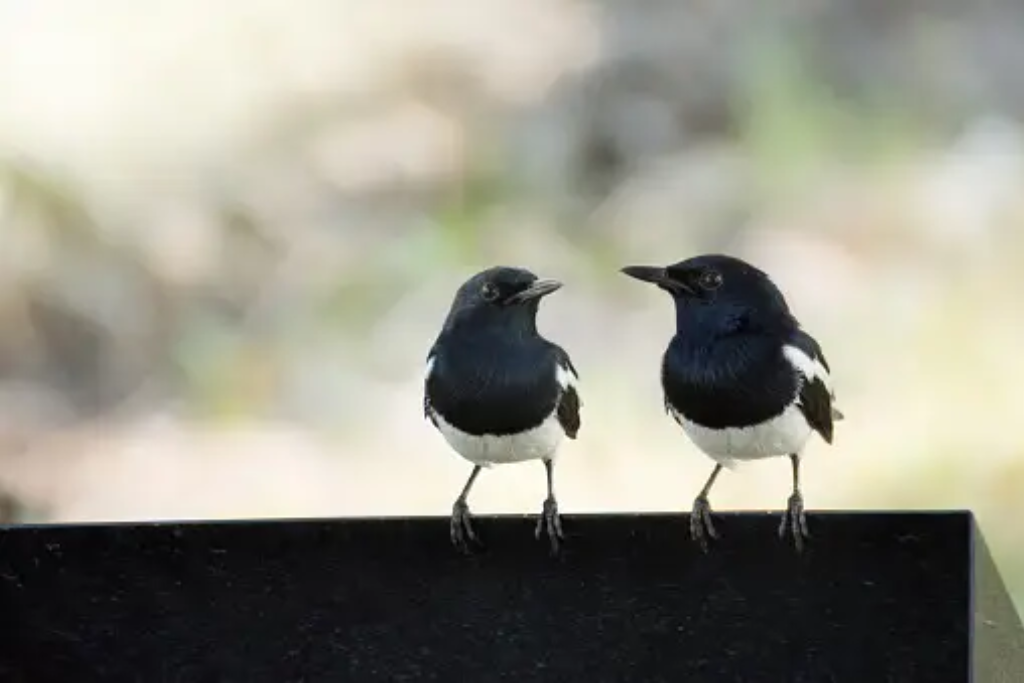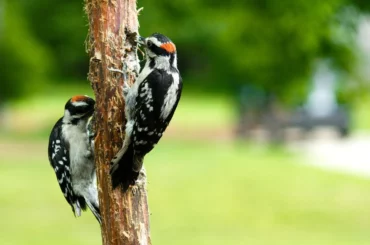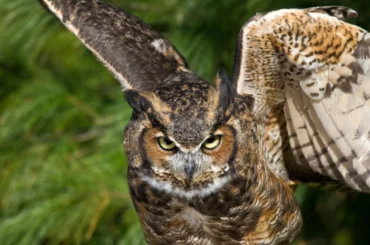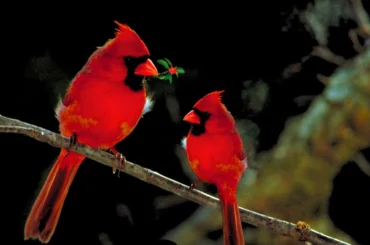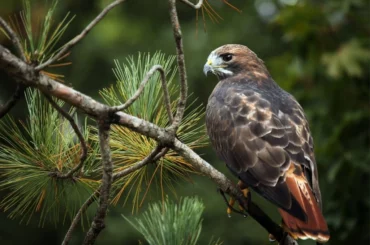Are you fascinated by the world of feathered creatures, especially those found in the beautiful landscapes of Ohio? Many people who enjoy observing birds visit Ohio due to the diverse range of habitats found there, including grasslands and woods.
Among its avian residents, a collection of black and white birds stand out, displaying stunning contrasts that are a marvel to observe.
What do Black and White Birds look like in Ohio?
You’ll likely come across various birds in stunning black-and-white coloration in Ohio. One of the most striking options is the black-capped chickadee, with its distinctive black cap, bib, and white cheeks blending into a gray back and wings.
In contrast, the downy woodpecker boasts the classic woodpecker look, as a bold black and white striped bird down the back and wings and a flashy bright red spot on the back of its head.
For a larger bird, watch for the pileated woodpecker, with bold white stripes on its neck and bill and a striking crest of black feathers atop its head.
Whether you’re a birdwatching pro or love admiring natural beauty, black and white birds in Ohio are a sight to behold.
Black-Capped Chickadee
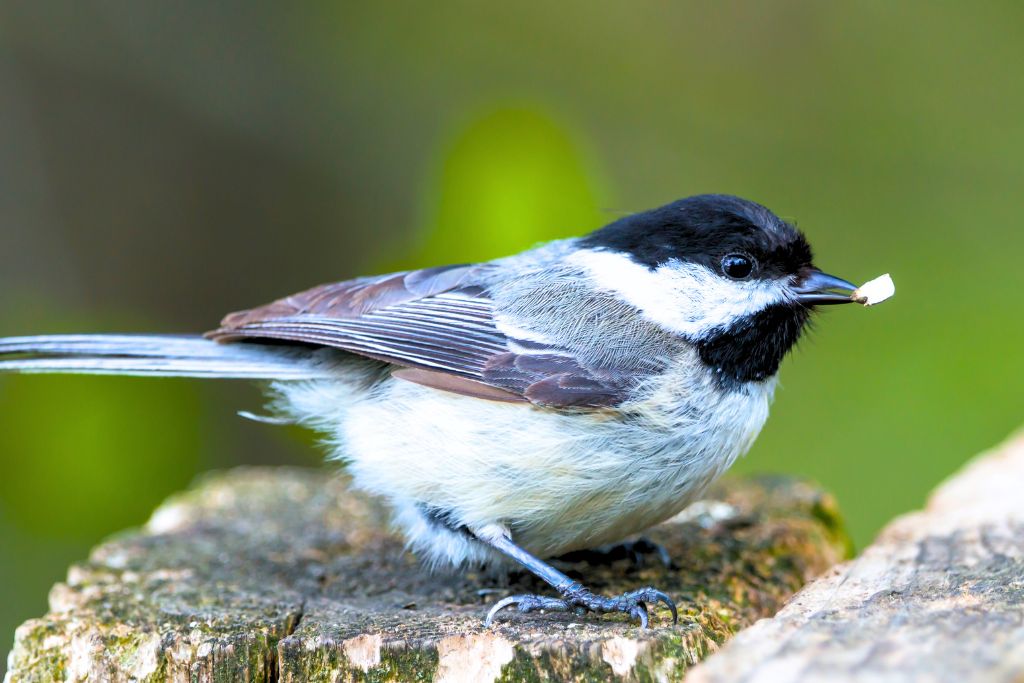
- Kingdom: Animalia
- Phylum: Chordata
- Class: Aves
- Order: Passeriformes
- Genus: Poecile
- Species: P. atricapillus
The Black-Capped Chickadee (P. atricapillus) is a small but renowned bird found in Ohio. They have a distinctive black cap and bib with white cheeks blending into a gray back and wings. These birds prefer to live in mixed-tree forests with deciduous and coniferous species.
Their nesting behaviors are also quite interesting. They build cup-shaped nests in tree cavities, usually 6 to 20 feet above the ground. The female builds the nest while the male collects material and helps to line it. Back-capped chickadees are monogamous and often breed with the same partner year after year.
The official bird of New Brunswick is the black-capped chickadee, as well as the official bird of Massachusetts and Maine in the United States. They are non-migratory North American songbirds that live in mixed forests. Their life expectancy is up to 12 years when kept in captivity, although it is only 8 years in their natural habitat.
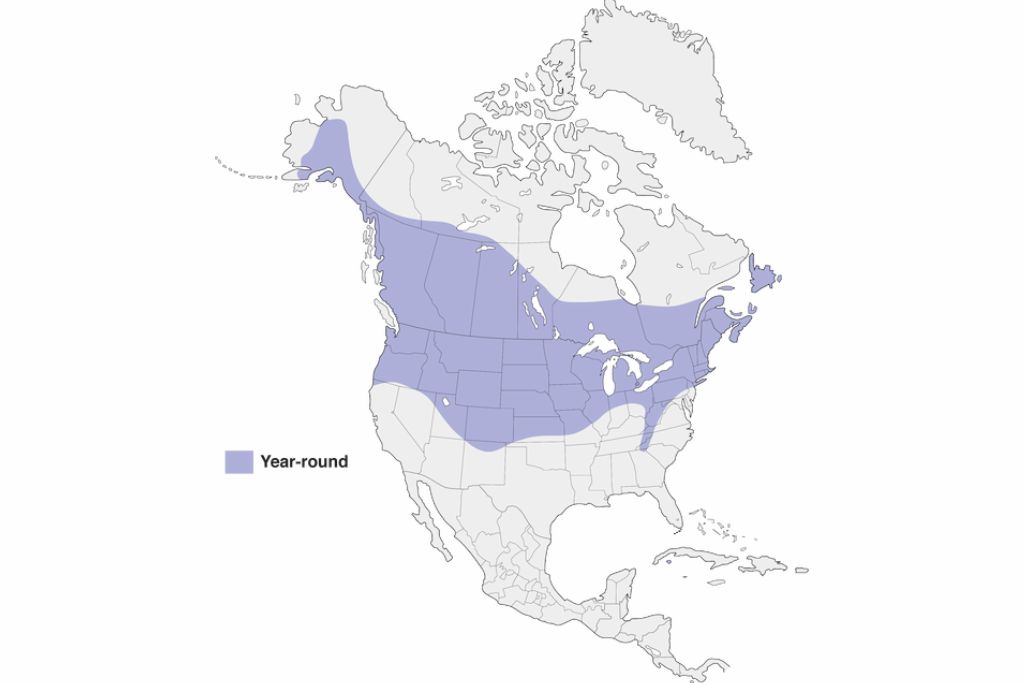
An interesting fact about these birds is their vocalization. Black-capped chickadees can produce an impressive variety of sounds and calls, from a sharp “chick-a-dee” to a long, buzzy trill. With 13 distinct vocalizations, the black-capped chickadee is the most vocal of all North American birds.
Black and White Tailed Eagle

- Kingdom: Animalia
- Phylum: Chordata
- Class: Aves
- Order: Accipitriformes
- Genus: Haliaeetus
- Species: H. albicilla
The Black-and-White-Tailed Eagle (H. albicilla) is a large raptor with a wingspan of up to 2.3 meters! The bird is commonly seen in Ohio and hunts for prey such as fish, small black and white birds, and others while soaring in the sky. Its white and black neck features help it stand out from other species.
It has a sharp beak for hunting, and its talons are strong enough to protect its territory from potential invaders. It is easily known for its impressive aerial performance.
The Black-and-White-Tailed eagle has an interesting mating ritual, which includes diving and soaring as part of the courtship display.
They are commonly referred to as the white-tailed sea eagle. Sometimes it is known as the bird black and white feathers, gray sea eagle, and Eurasian sea eagle.
This eagle breeds in Northern Europe and Northern Asia. You can spot them at their wintering grounds, which include wetlands and large lakes.
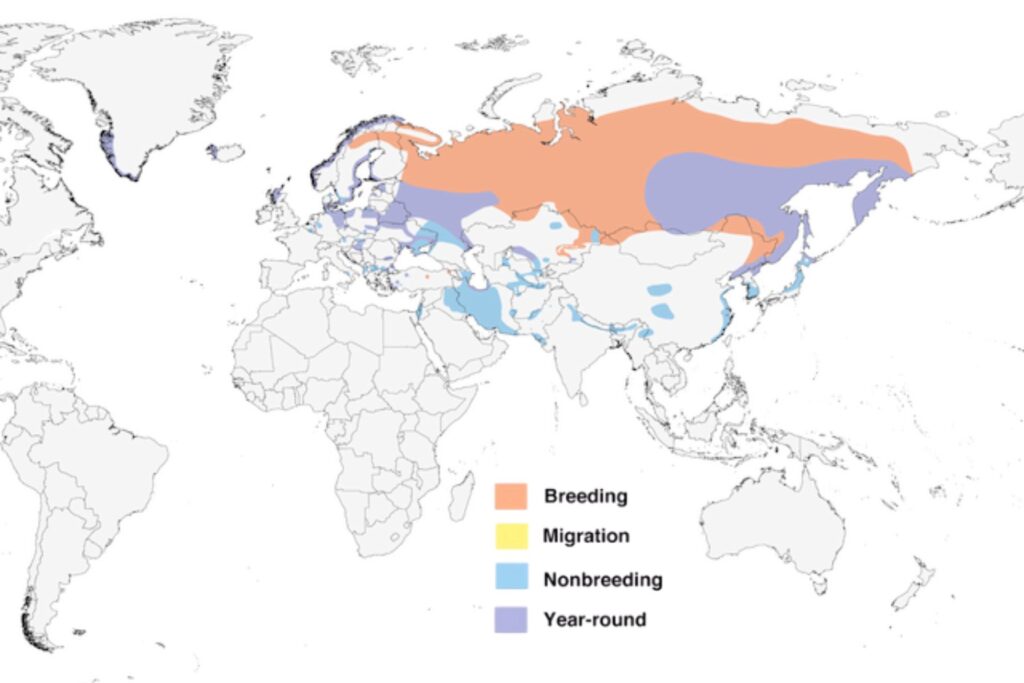
Scientists have documented no other bird lives as long as they do. A white-tailed sea eagle could live for up to 30 years in the wild. They can mate for life but may change partners if one dies or leaves the area.
Dark-Eyed Junco
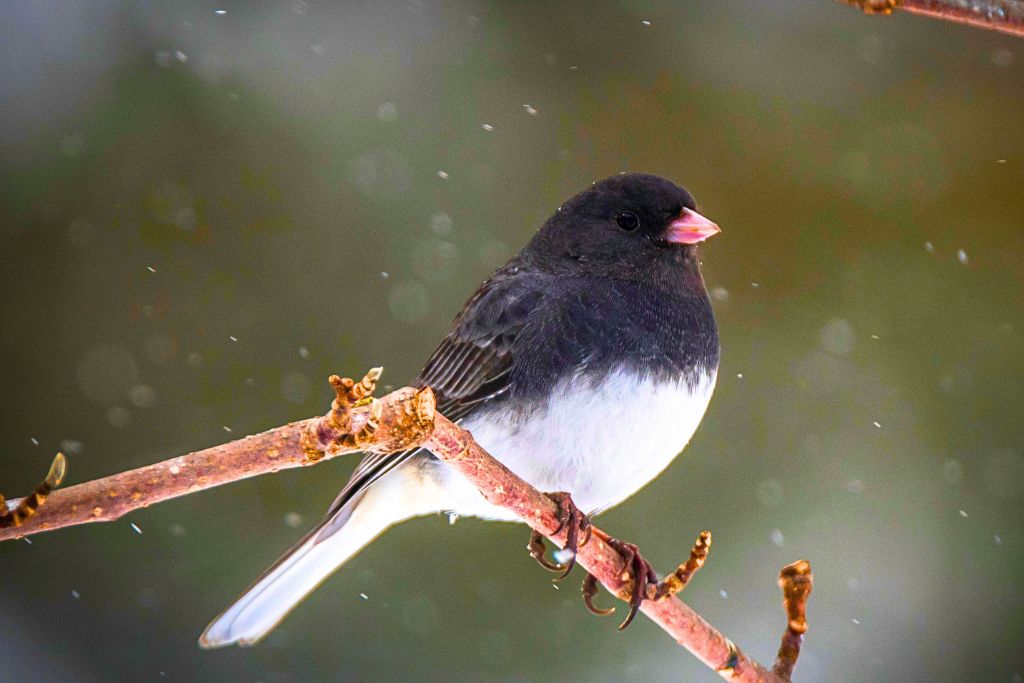
- Kingdom: Animalia
- Phylum: Chordata
- Class: Aves
- Order: Passeriformes
- Genus: Junco
- Species: J. hyemalis
The Dark-Eyed Junco (J. hyemalis) is a small songbird known for its dark gray or brown body and white belly. This bird has a bright pinkish-white beak and feet, contrasting with its dark eyes.
Dark-Eyed juncos are birds that can live in cold places and can be found in many parts of North America. They prefer forest edges and woodlands but can also be found in parks and gardens, especially in winter.
They typically construct their nests on the ground, typically in close proximity to a large rock or tree. They live in woods and lay between 3 and 6 eggs at a time. The eggs are kept warm and fed to the chicks by both parents.
Despite their name, the color of a dark-eyed junco’s eyes can vary, sometimes appearing to be a lighter reddish-brown. “Snowbirds” is a frequent name for these birds because of their annual migration to warmer climates.
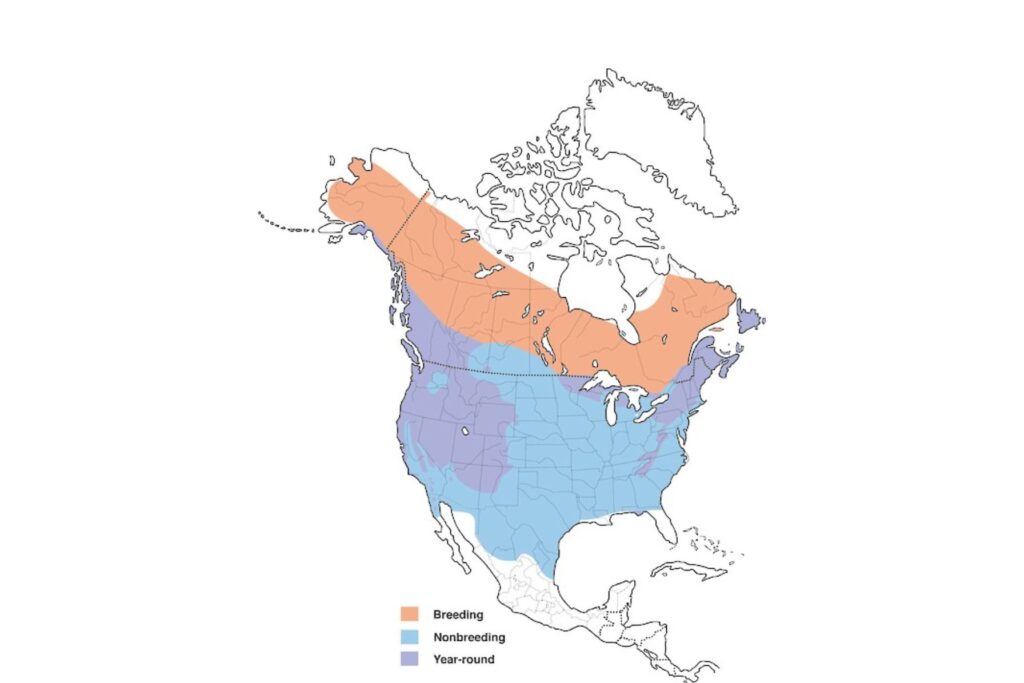
In the wild, a Dark-Eyed Junco has a 3 to 5-year life expectancy, though individuals have been documented to live as long as 11 years.
In Ohio, dark-eyed juncos are common winter visitors. They are a common sight in open forests, parks, gardens, and even backyards throughout the state. In the spring, they migrate to the northern part of the state and Canada for breeding.
Northern Mockingbird
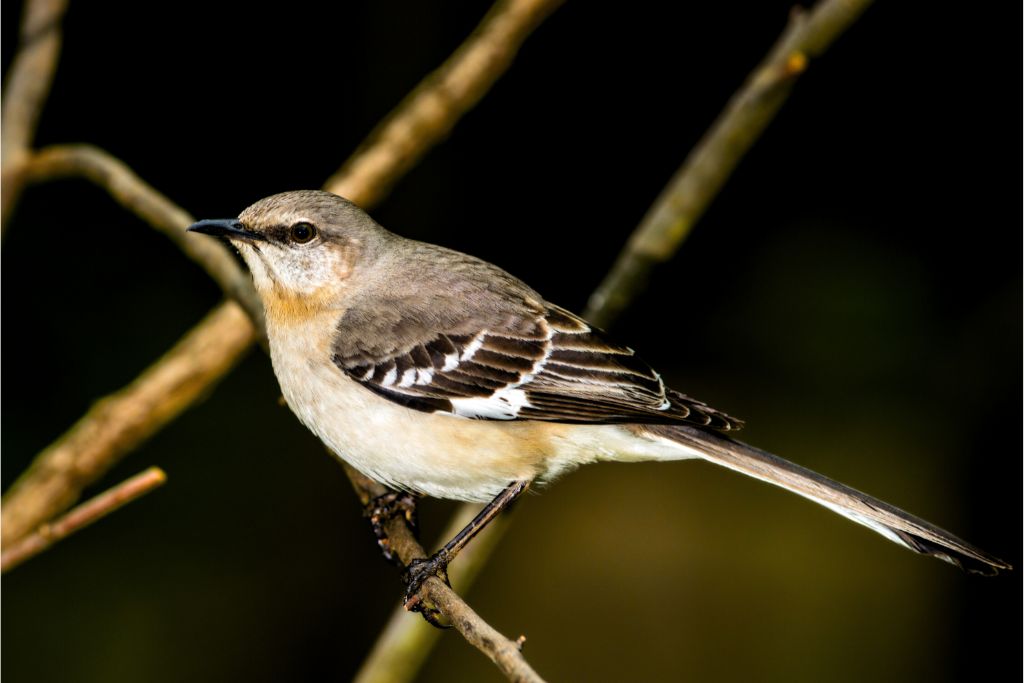
- Kingdom: Animalia
- Phylum: Chordata
- Class: Aves
- Order: Passeriformes
- Genus: Mimus
- Species: M. polyglottos
Northern Mockingbirds (M. polyglottos) are medium-sized songbirds with slender bodies, long legs, and long tails. Their bodies are brownish gray, while their wings and tails are white. The most striking feature is their ability to mimic the songs of other birds.
These birds are quite flexible, so you may see them in various settings, including parks, suburbs, gardens, and woodland fringes. Their ability to imitate sounds helps them communicate in densely populated areas.
The female northern mockingbird may lay 3 to 5 eggs in a nest in a tree or bush. They primarily incubate the eggs, while the male defends the territory with its distinct song.
Known for its vast repertoire, a northern mockingbird can mimic over 200 sounds, including other birds, insects, and even mechanical noises. They sing all day and night, especially when the moon is full.
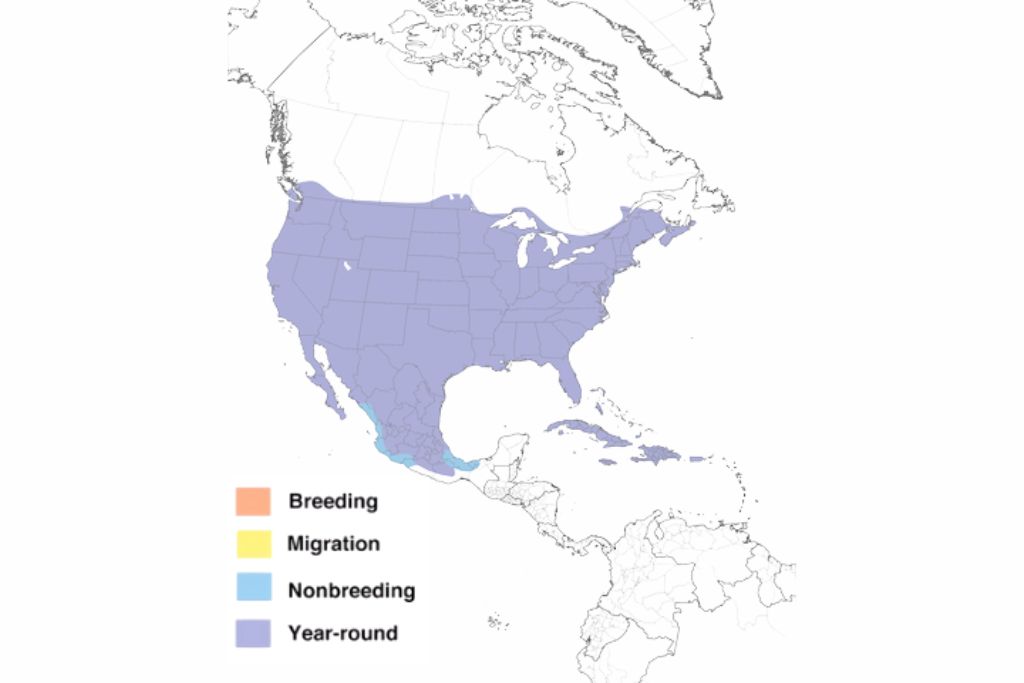
Typically, a wild Northern Mockingbird has a lifespan of 8 to 20 years. Northern mockingbirds may be seen around Ohio, although they congregate most often in suburban and urban settings. They’re usually spotted in parks, gardens, and along roadsides with thickets and shrubs for nesting.
Downy Woodpecker
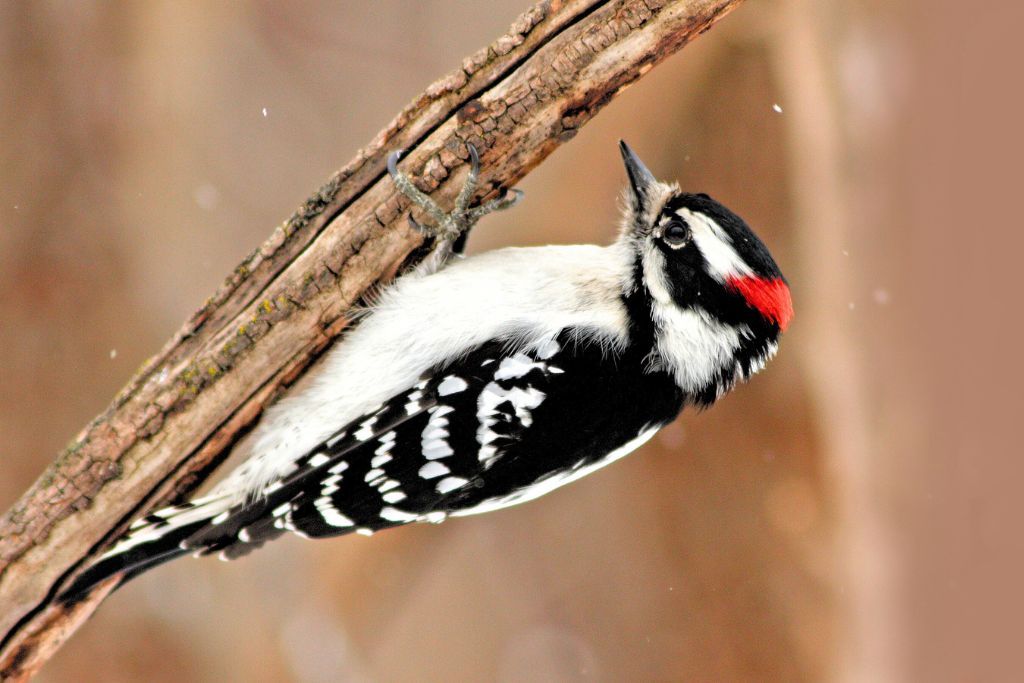
- Kingdom: Animalia
- Phylum: Chordata
- Class: Aves
- Order: Piciformes
- Genus: Dryobates
- Species: D. pubescens
Downy Woodpeckers (D. pubescens) are the smallest of North America’s woodpeckers. Their upper parts are black and white, their underparts are white, and the rear of the male’s head has a noticeable red patch. These characteristics allow them to be distinguished from other birds. Their bill is shorter than their head, a characteristic that differentiates them from the similar-looking hairy woodpecker.
The Downy Woodpeckers are adapted to various habitats, from open woodlands to city parks. Their short bills allow them to peck and find food in twigs and plant stems, a niche that larger woodpeckers can’t fill.
These birds peck holes in trees where they lay their eggs and rear their young. The female lays 3 to 6 eggs, and both parents share duties in feeding and protecting their offspring.
They have a unique “drumming” sound, which is the sound of their rapid pecking on tree bark. They often join flocks of small songbirds, probably for protection from predators.
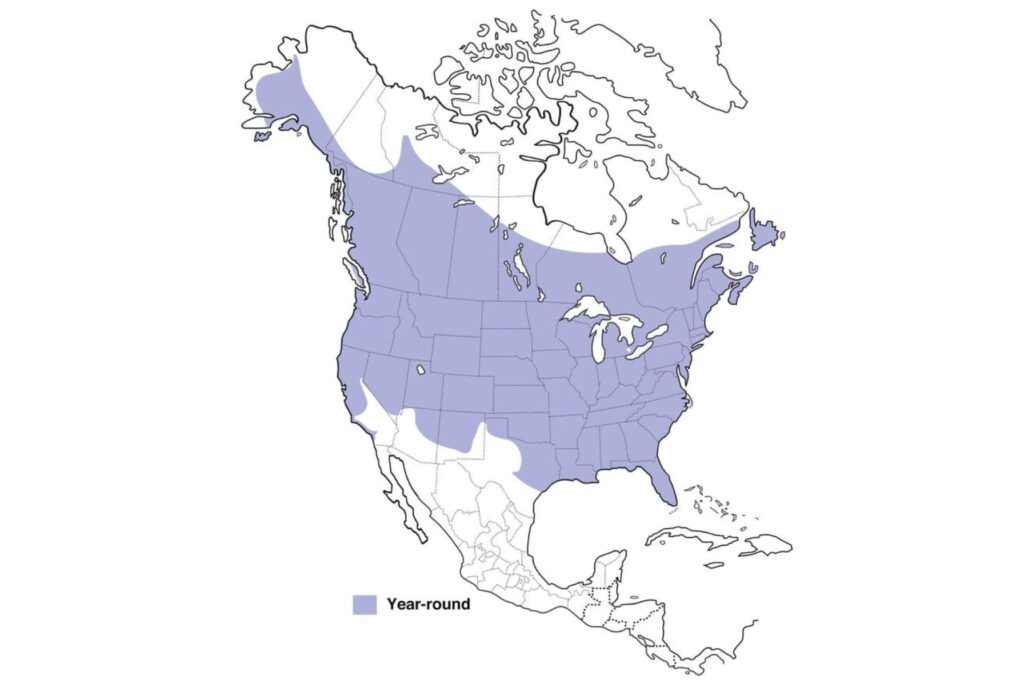
Downy woodpeckers typically only survive 1 to 2 years in the wild and may live up to 10 years if their environment is right.
Downy woodpeckers are widespread throughout Ohio. They are year-round residents and can be spotted in woodland areas, parks, and suburban or urban yards with mature trees.
American Crow
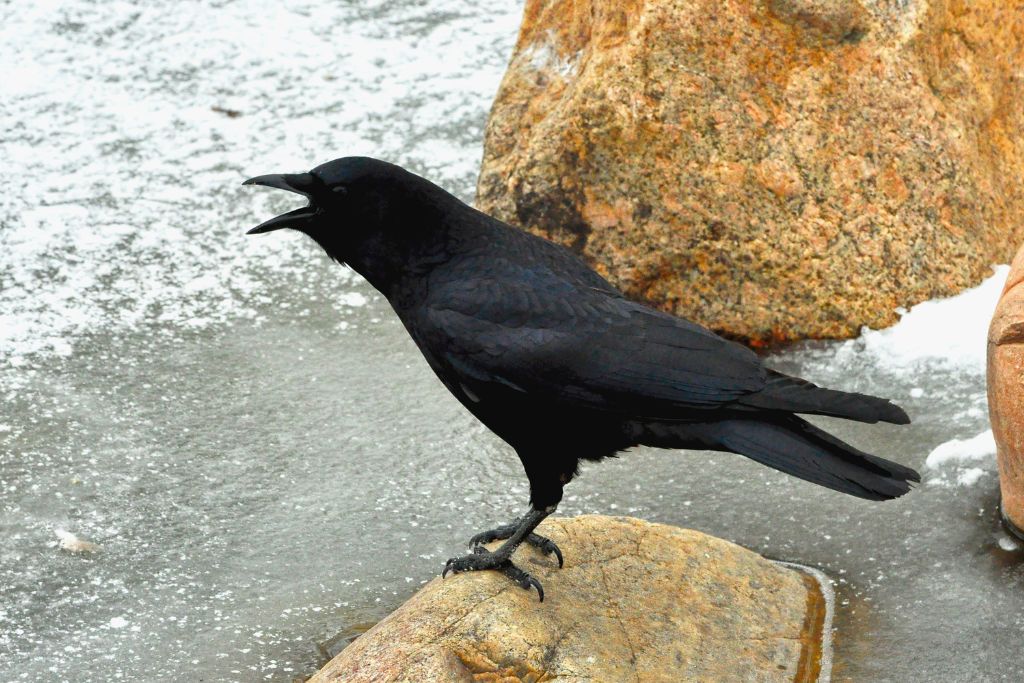
- Kingdom: Animalia
- Phylum: Chordata
- Class: Aves
- Order: Passeriformes
- Genus: Corvus
- Species: C. brachyrhynchos
The American Crow (C. brachyrhynchos) can be found throughout the continent of North America. They are social birds and live in large, noisy flocks of up to several hundred individuals. These birds are highly adapted and can survive in land and urban environments. American crows have a complex vocal repertoire used to communicate with each other.
Mated pairs form large families of up to 15 individuals from several breeding seasons that remain together for many years. Their offspring from a previous season will remain with the family and assist in rearing new nestlings.
Crows are highly intelligent birds, capable of using tools and solving complex problems. They have been seen tricking larger birds, such as raptors, into leaving their nests by seeming wounded.
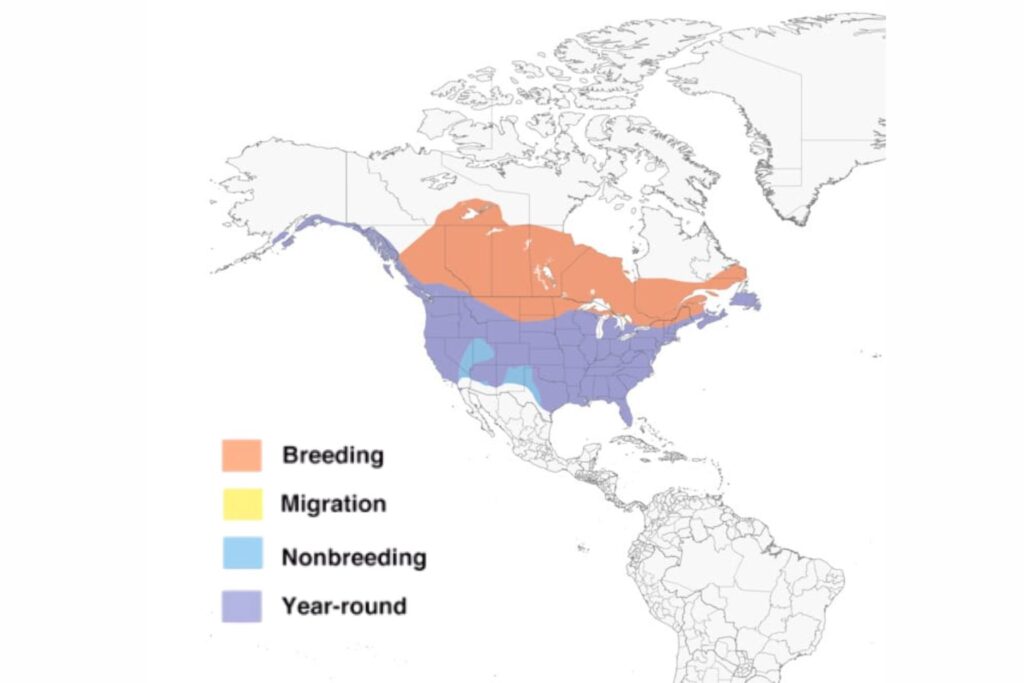
Wild American Crows have a 15-year lifespan but often succumb to disease and predation. The American crow is a big bird with iridescent black feathers. Its feet and beak are also black.
Some see them as thieves and other negative connotations. However, they are seen by some neo-pagan and indigenous cultures as signs of certain gods, such as Apollo, Odin, and others, and of good luck.
Snow Bunting
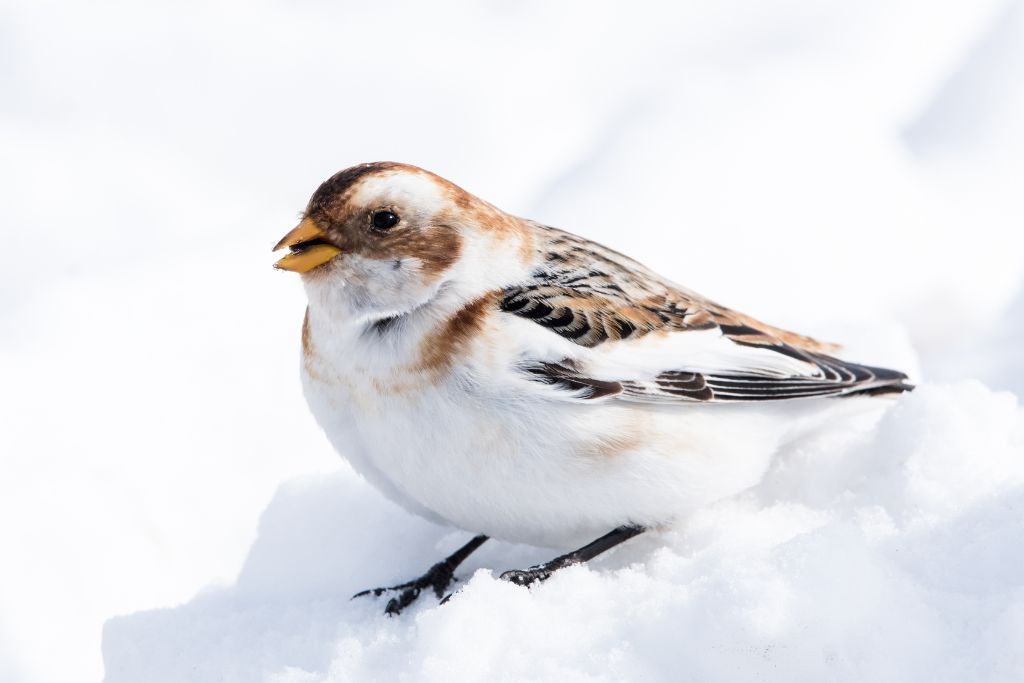
- Kingdom: Animalia
- Phylum: Chordata
- Class: Aves
- Order: Passeriformes
- Genus: Plectrophenax
- Species: P. nivalis
The Snow Bunting (P. nivalis) is a small, sparrow-sized bird with a robust body and long wings. In winter, males have pure white plumage with black wingtips, while females have more brown with black streaks. This bird is known for its sweet, twittering song.
Snow buntings are cold-weather birds, well adapted to icy habitats. They have feathered tarsi (part of the leg) for warmth. The summer months find these birds in the Arctic, while they spend the colder months in the Northern United States, in states like Ohio.
They nest in rock crevices in the Arctic. The female lays 4 to 6 eggs and takes care of the chicks, while the male stands guard to protect the nest.
Despite harsh conditions, snow buntings often sing even in the middle of winter. Because of its mostly white plumage and its preference for snowy environments, it is also called the “snowflake bird.”
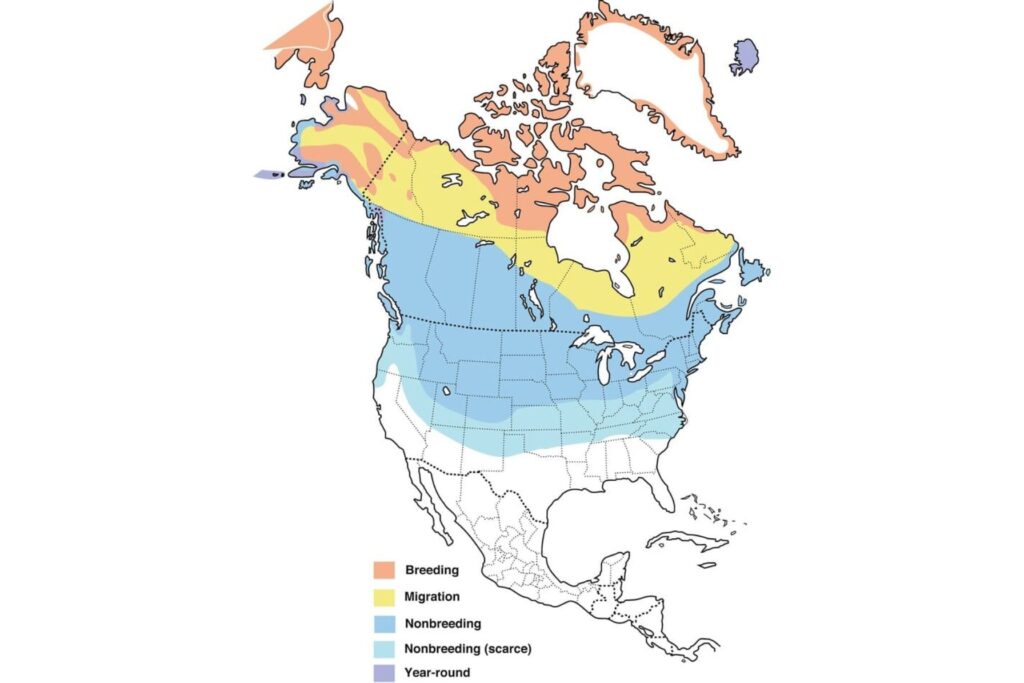
The average lifespan of a Snow Bunting is 3 to 4 years in the wild. However, some individuals have been recorded living for 9 years.
During the coldest months of the year, you may see them in Ohio, particularly near the coast of Lake Erie. During their migration, they may also be seen in wide fields and farmlands.
Sharp-Shinned Hawk
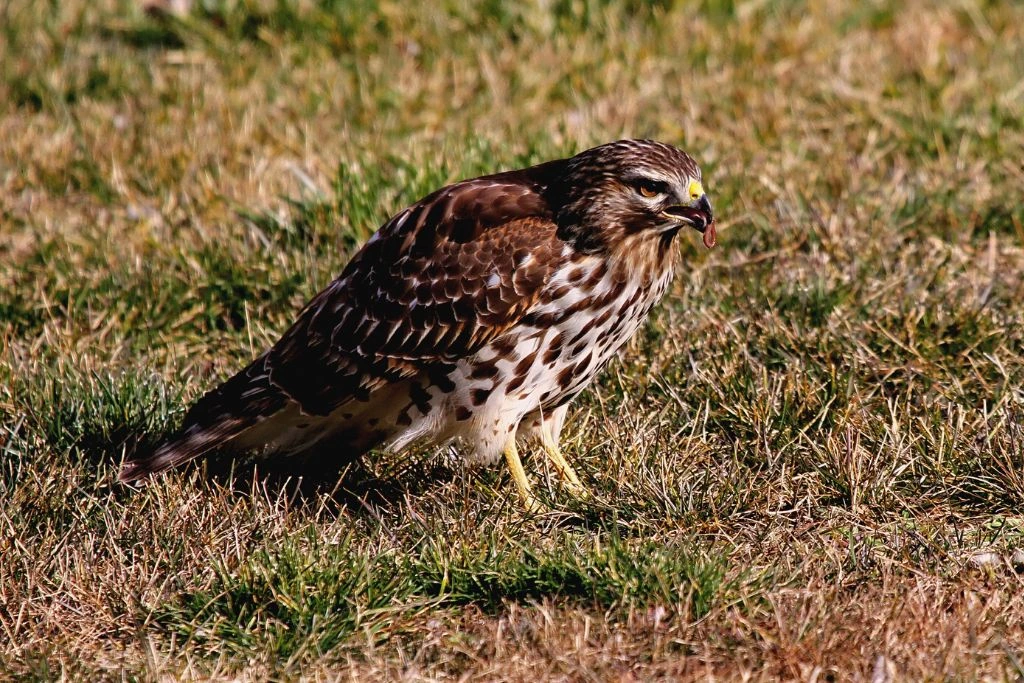
- Kingdom: Animalia
- Phylum: Chordata
- Class: Aves
- Order: Accipitriformes
- Genus: Accipiter
- Species: A. striatus
Commonly known as a “sharpie,” a sharp-shinned hawk (A. striatus) is a small hawk, with males being the smallest hawk in the United States and Canada. They are typically black or dark blue-gray and have a reddish tail band with white underneath. They also have distinct proportions, such as long legs, short wings, and long tails, essential for navigating their deep-wood homes.
This hawk gets its name from its flattened, thin “shins” or shanks. They can live up to 15 years and are monogamous, forming a mating bond for life.
They feed mainly on small birds, like sparrows, doves, juncos, chickadees, or woodpeckers, using surprise attacks from the cover of trees.
Sharp-shinned hawks are considered to be a keystone species, as their presence can increase biodiversity in an ecosystem. They play an important role in the balance of nature by controlling small mammal populations, like squirrels and mice, which would otherwise multiply uncontrollably without predators.
They carry their prey to a stump or low branch to pluck offspring eating. They also continue to feed their offspring for several weeks, drop their prey into the nest for them to eat, and as they gain skills, the parents will switch passing prey to the young hawks in flight.
To see these amazing black and white speckled birds in action, look up at the sky during their migration season, typically in late summer.
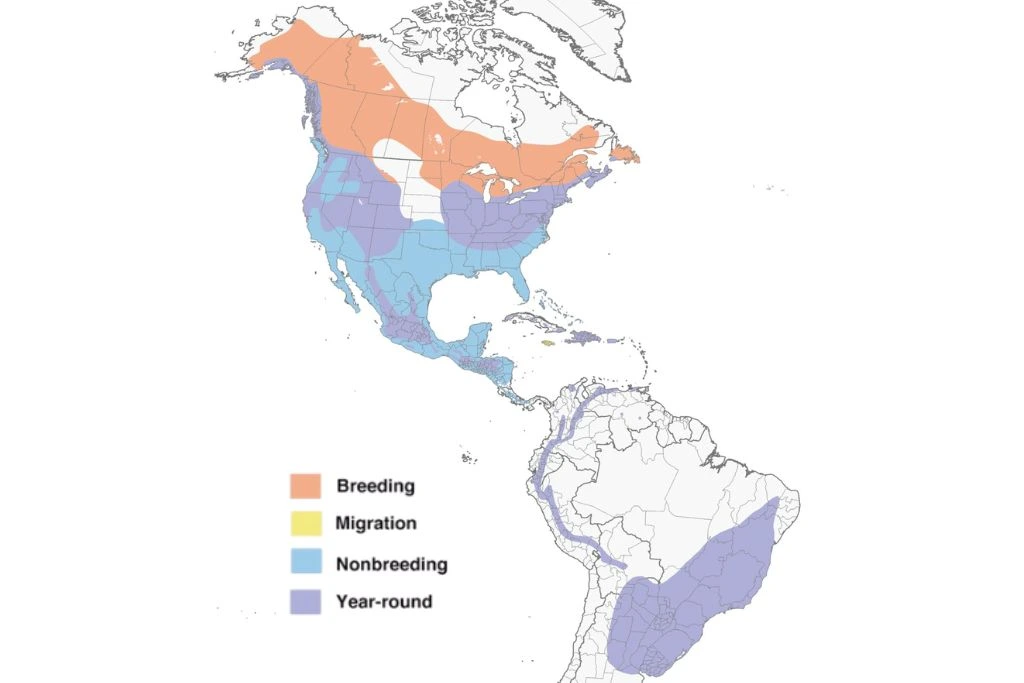
Conclusion
There are a lot of beautiful and interesting black and white birds in Ohio. All these species can be seen in this area, from the sharp-shinned hawk to the white-tailed eagle. Some animals stay the same color all year, while others change from black to white with the seasons.
If you want to do something different than Ohio’s usual plants and animals, watch birds! Find the amazing sharp-shinned hawk, American crow, white-tailed eagle, and black-capped chickadee for yourself and add them to your list of beautiful animals.
FAQs
What Birds Are Black and White in Ohio?
Several species of black and white birds are found in Ohio, including the American crow, sharp-shinned hawk, wood thrush, common grackle, northern flicker, and barn swallow.
How do These Birds Survive in Ohio?
Black and white birds in Ohio employ various strategies to survive in the state’s diverse climate and landscape. They adapt to different habitats, forage for food, build nests for shelter and reproduction and migrate or hibernate depending on the species.
Are Black and White Birds Good to Have Around?
Yes, black-and-white birds, like the American crow, are useful. They suppress insects, eat carrion, and spread seeds. Their effects vary by species and ecological setting.
Where Can I Spot Black and White Birds in Ohio?
Ohio has black and white birds in woods, woodlands, fields, marshes, urban areas, and near bodies of water.
What Does it Mean When You See Black and White Birds
Black-and-white birds have different meanings depending on culture and beliefs. They may represent balance, peace, or spirituality. However, interpretation is subjective.
What is the Size of Black and White Birds in Ohio?
The size of black and white birds in Ohio varies depending on the species. The American crow is about 16 to 21 inches long and has a wingspan of 33 to 39 inches. The northern flicker is around 11 to 14 inches in length.
Are There Any Endangered Black and White Bird Species in Ohio?
Yes, some black and white birds in Ohio are on the verge of extinction. Kirtland’s warbler is one example. It has black and white feathers with clear patterns. This bird needs a very special habitat, and it is listed as endangered because its habitat is being lost and broken up.

